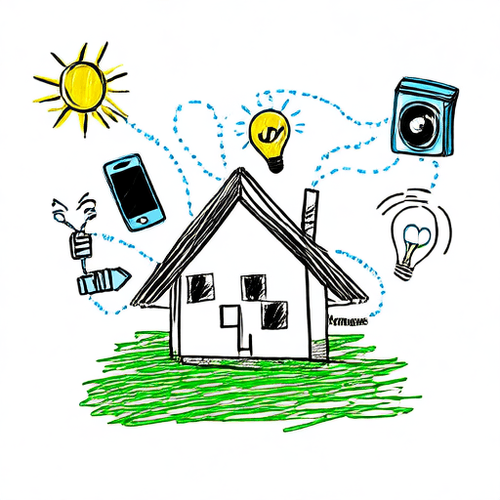Integrating and Mastering MQTT with Home Assistant for Flexible Device Communication

NGC 224
DIY Smart Home Creator
Unlocking Flexible Communication: Integrating MQTT with Home Assistant
In the world of smart homes, reliable and flexible communication between devices is key. While many devices offer direct integrations, some of the most versatile and DIY-friendly options rely on a lightweight messaging protocol called MQTT (Message Queuing Telemetry Transport). Integrating MQTT with Home Assistant opens up a vast ecosystem of devices, from custom-built sensors using ESP boards to off-the-shelf devices running firmware like Tasmota or ESPHome.
This guide will walk you through setting up an MQTT broker, configuring Home Assistant to communicate with it, integrating various types of devices, and using MQTT messages within your automations. By mastering MQTT, you gain finer control and access to a wider range of smart home possibilities.
What is MQTT and Why Use It?
MQTT is a publish/subscribe messaging protocol designed for lightweight communication, making it ideal for constrained devices and unreliable networks (like those sometimes found in large homes). Instead of devices talking directly to each other, they publish messages to a central server called a "broker." Other devices interested in those messages "subscribe" to specific topics on the broker.
Using MQTT with Home Assistant offers several advantages:
- Decoupling: Devices don't need to know about Home Assistant or each other directly; they just communicate via the broker. This makes your system more resilient and easier to modify.
- Flexibility: You can easily integrate DIY projects, custom sensors, and devices not natively supported by Home Assistant, provided they can speak MQTT.
- Efficiency: MQTT's lightweight nature consumes less bandwidth and power, important for battery-powered devices.
- Centralization: The broker acts as a central hub for message traffic, making monitoring and debugging easier.
Setting Up Your MQTT Broker (Mosquitto Add-on)
The easiest way to get started with an MQTT broker on Home Assistant OS or Supervised is to use the official Mosquitto broker add-on. If you are running Home Assistant Core or Container, you would typically set up a Mosquitto container or installation separately.
Installation Steps (Home Assistant Add-on):
- Navigate to Settings > Add-ons.
- Click on the Add-on Store button (bottom right).
- Search for "Mosquitto broker".
- Select the add-on and click Install.
- Wait for the installation to complete.
Configuration:
Before starting the add-on, it's recommended to configure it. Go to the Configuration tab of the Mosquitto add-on.
You'll typically need to define:
- Listeners: Configure ports. The default 1883 is standard for MQTT. You might also add 8883 for MQTT over TLS/SSL if you need encryption (more advanced).
- Users: Crucially, set up username/password authentication. This prevents anyone on your network from publishing or subscribing to messages. Mosquitto can use Home Assistant users. Set
anonymous: falseto disable anonymous access andallow_suspend: trueto use HA users. - ACLs (Access Control Lists - Optional but Recommended): For more advanced security, you can restrict which users can publish/subscribe to specific topics. This is configured in a separate ACL file referenced in the add-on configuration.
Example basic configuration (using HA users):
logins: []
anonymous: false
customize:
active: true
folder: mosquitto
acl: true
require_certificate: false
certfile: fullchain.pem
keyfile: privkey.pem
Ensure anonymous: false is set if you plan to use Home Assistant users for authentication. Add your Home Assistant users under the "Users" menu in Home Assistant if they don't exist, as these are the credentials you will use for devices.
After configuring, go to the Info tab and click Start. Check the Log tab to ensure it started without errors. Enable "Start on boot" and optionally "Watchdog".
Configuring the Home Assistant MQTT Integration
With the broker running, tell Home Assistant how to connect to it.
- Navigate to Settings > Devices & Services.
- Click + Add Integration.
- Search for "MQTT".
- Select the MQTT integration.
- If using the Mosquitto add-on on the same instance, Home Assistant should auto-discover it. Confirm the details. If not, enter the connection details manually:
- Broker: Typically the IP address or hostname of the broker (e.g.,
a0d7b954-mosquittoif using the add-on hostname, orlocalhost/127.0.0.1if the broker is on the same host and not using the add-on hostname discovery). - Port: 1883 (or your configured port).
- Username/Password: The Home Assistant username and password you configured or plan to use for MQTT communication.
- Broker: Typically the IP address or hostname of the broker (e.g.,
- Click Submit. If the connection is successful, the integration will be set up.
The MQTT integration adds a new entity, mqtt.broker, which provides information about the connection status.
Understanding MQTT Topics and Payloads
Communication in MQTT revolves around topics and payloads.
- Topic: A hierarchical string (like a file path) used to route messages (e.g.,
home/livingroom/light/power,sensors/garage/temperature). Devices publish messages to topics, and clients subscribe to topics to receive messages. - Payload: The actual data of the message. This is usually text, often in JSON format (e.g.,
ON,OFF,{"temperature": 22.5, "humidity": 60}).
A good topic structure is crucial for organization. Start with a general category (e.g., home), then refine by location (livingroom), device type (light), and specific function (power, state, command). Using command and state subtopics is common practice for devices: publish commands to a .../command topic and expect state updates on a .../state topic.
Integrating MQTT Devices
There are two main ways Home Assistant integrates MQTT devices:
1. MQTT Discovery (Recommended)
Many modern firmwares (like Tasmota, ESPHome, Zigbee2MQTT) can be configured to send special configuration messages to the MQTT broker on a specific topic (usually homeassistant/+/+/config). Home Assistant, if configured for discovery (which the integration does by default), subscribes to this topic. When it receives a configuration message, it automatically creates the corresponding device and entities (lights, switches, sensors, etc.) in Home Assistant.
This is the easiest method as it requires minimal configuration in Home Assistant itself; you just need to configure the device/firmware correctly to use your MQTT broker and enable discovery.
2. Manual Configuration (YAML)
For devices or firmwares that don't support MQTT discovery, or if you need more custom control, you can manually define MQTT entities in your Home Assistant configuration (configuration.yaml or split files). You define the topic Home Assistant should subscribe to for state updates and the topic it should publish commands to.
Example: A simple MQTT switch
mqtt:
switch:
- unique_id: garage_light_mqtt
name: "Garage Light"
state_topic: "garage/light/state"
command_topic: "garage/light/command"
payload_on: "ON"
payload_off: "OFF"
state_on: "ON"
state_off: "OFF"
optimistic: false # Set to true if the device doesn't report state feedback
qos: 0 # Quality of Service (0, 1, or 2)
retain: true # Broker retains the last message on the state topic
You can define various entity types (mqtt.light, mqtt.sensor, mqtt.binary_sensor, mqtt.cover, etc.) with specific parameters tailored to their function.
Using MQTT in Automations
MQTT messages can serve as powerful triggers and actions in your Home Assistant automations.
- Triggering Automations: Use an MQTT trigger to start an automation when a message arrives on a specific topic, optionally filtering by payload.
automation: - alias: "Notify when garage door opens via MQTT" trigger: platform: mqtt topic: "garage/door/state" payload: "OPEN" action: - service: persistent_notification.create data: message: "Garage door is open!" - Publishing Messages: Use the
mqtt.publishservice to send commands to devices or broadcast information on a topic.automation: - alias: "Turn off garage light when door closes" trigger: platform: state entity_id: binary_sensor.garage_door_contact to: "off" # Assuming you have a contact sensor entity action: - service: mqtt.publish data: topic: "garage/light/command" payload: "OFF"
Best Practices for a Reliable MQTT Setup
- Consistent Topic Structure: Plan your topic hierarchy logically and stick to it. This makes managing devices and debugging much easier.
- Use Authentication: Always require username/password for connecting to the broker. Never leave it open for anonymous access.
- Implement QoS: Understand Quality of Service levels. QoS 0 is fire-and-forget. QoS 1 ensures delivery at least once. QoS 2 ensures delivery exactly once. For most smart home commands and state updates, QoS 0 or 1 is sufficient. QoS 1 adds overhead but guarantees the message arrives.
- Leverage Retained Messages: For state topics (like a light's current state), publishing the message with the 'retain' flag set to true tells the broker to store the last message. New subscribers immediately receive this retained message, allowing devices or Home Assistant to know the current state upon connecting or restarting.
- Utilize Discovery: Whenever possible, use MQTT Discovery. It reduces manual configuration and potential errors in Home Assistant's YAML.
- Monitor Your Broker: Keep an eye on the Mosquitto add-on logs or your broker's logs to spot connection issues or malformed messages. Tools like MQTT Explorer can also help visualize message traffic.
- Plan for Resilience: If your broker is on the same machine as Home Assistant, a restart affects both. Consider running the broker on a separate, stable machine or using Home Assistant's add-on watchdog feature.
Troubleshooting Common MQTT Issues
- Device Not Connecting: Double-check the broker address, port, username, and password configured on the device. Ensure the Mosquitto add-on/broker is running and accessible from the device's network segment.
- Messages Not Appearing: Use an MQTT client tool (like MQTT Explorer or
mosquitto_subcommand-line tool) to connect to the broker and subscribe to the topic the device is publishing to. See if the messages arrive at the broker. Then, check if Home Assistant is correctly subscribed (via the HA MQTT integration logs or by publishing a test message from HA and seeing if the device responds). - Entity State Not Updating: Verify the device is publishing state updates to the correct topic specified in Home Assistant's configuration (either via discovery or manual YAML). Check that the payload format matches what Home Assistant expects (e.g., "ON"/"OFF", JSON).
- Commands Not Working: Ensure Home Assistant is publishing commands to the correct command topic the device is subscribed to. Check the payload format. Use an MQTT client to subscribe to the command topic and see if Home Assistant's commands arrive at the broker.
Conclusion
MQTT is a cornerstone technology for many flexible and DIY-friendly smart home setups. By integrating a reliable MQTT broker like Mosquitto with Home Assistant, you unlock the ability to easily connect a vast array of devices, create custom sensors, and build sophisticated automations based on a robust and efficient messaging system. While it adds an extra layer to your architecture, the power and flexibility gained are well worth the effort for building a truly customizable smart home ecosystem.

NGC 224
Author bio: DIY Smart Home Creator
